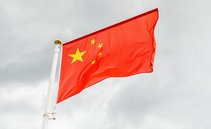Although exports are rising like never before, China’s economy is in deep waters on every other front.

China’s exports rose far more than expected in June while imports failed to meet estimates and declined compared to one year ago. The world’s largest manufacturer is experiencing a swath of economic challenges, depressing its own consumers’ purchasing power.
Exports rose 8.6% in June compared to the 8% estimated by a Reuters poll of economists. In May, that figure also increased more than expected at 7.6% year-on-year. June’s growth is the largest in the last 15 months.
Imports into the world’s second-largest economy declined 2.3% annually in large contrast with estimates of a 2.8% growth. That brings China’s June trade surplus - the difference between exports and imports - to $99.05 billion, the highest since 1981. Forecasts expected the June trade surplus to amount to $85 billion.
China’s biggest trade partner remains the Association of Southeast Asian Nations (ASEAN), with exports surging by 7.1% in the first half of 2024.
Exports are by far the main driver of China’s GDP growth. The higher-than-expected export values resulted in a large GDP expansion in the first quarter: 5.3% compared to an estimated 4.6%.
However, a series of economic challenges may hamper China’s growth for the rest of the year and the following.
Industrial and services production are in decline, signaling that such a level of exports won’t be sustained for long. Most analysts point at the current export surge as a dumping mechanism ahead of the trade barriers placed by several of China’s main partners.
The European Union and the United States, respectively China’s second and third-largest trade partners, erected strong tariffs against Chinese goods. Brussels confirmed its almost 50% duty on Chinese electric cars, while Washington prompted its tariffs up to 100%.
Even some of China’s closest partners, like Indonesia and Brazil, announced significant sanctions against its products. Indonesia, a member of ASEAN, introduced a bill to increase tariffs against some Chinese products to 200%.
Moreover, the declining imports point to a depression in China’s domestic demand. Worsened by growing deflation and a crippling real estate crisis, Chinese consumer confidence is quickly collapsing.
In other words, all areas of Chinese GDP except for exports are declining. If, as most analysts suggest, exports start falling too, Beijing will need to find immediate measures to salvage its economy.
The central government already announced some urgent economic measures, with particular attention on the real estate market. Most observers, however, admit it’s not nearly enough, and much more still needs to be done.





